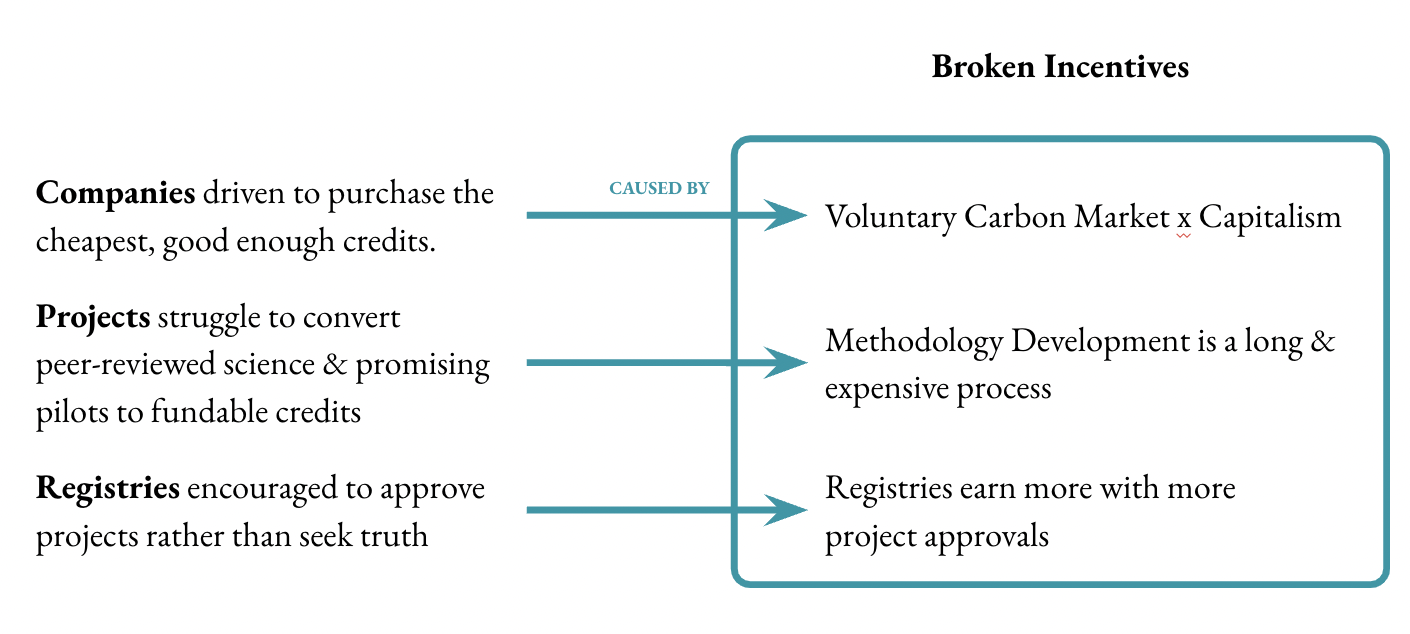
Broken Incentives cause systemic problems
Carbon Markets are a powerful financing vehicle to addressing the climate crisis, yet they fall short in a few ways. For example, carbon markets:- Drive symptom management rather than treating root causes —> there is not enough of a feedback loop for causal treatment.
- Result in carbon reductionism —> it is difficult to measure complexity of whole ecosystem health.
- Max out at neutrality —> offsets are designed to “undo an emission”; to solve the problem, we need to go beyond neutrality.
- Create “race to the bottom” mechanics —> offset buyers look for the cheapest carbon credits (regardless of quality), giving they give the impression carbon is a commodity and all credits are fungible.

Systemic Problems caused by Broken Incentives
Spirals builds beyond carbon markets
Spirals integrates climate impact into the backbone of our economy, enabling a regenerative future. We are working on a new economy built on the rails of good, building an ecosystem that rewards positive externalities by aligning economic and ecological incentives.
Spirals Incentive Design Principles